#womenofardaproject
Photo




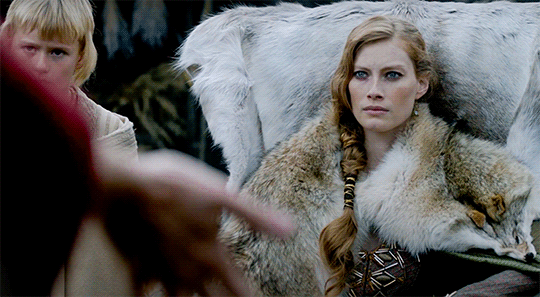

Théodwyn | Women of Arda - Ladies of Rohan | Part 5 of 5
Théodwyn was the daughter of Thengel King, the sixteenth king of Rohan, and Morwen Steelsheen. She was the last of five children, born in T.A 2963, and the younger sister of Théoden King. She was described as the fairest of her siblings and her brother loved her dearly.
In T.A 2989, Théodwyn married Éomund of Eastfold, the Lord of Alburg and a distant descendant of Eofor, the third grandson of Eorl the Young. He was a renowned warrior, but would often ride out to battle orcs in hot anger and with few men. In T.A 2991, they had a son, Éomer, and four years later their daughter Éowyn was born.
Éomund was killed in T.A 3002, when he pursued a band of orcs to the Emyn Muil and was surprised by a strong force lying in wait there. Théodwyn grew ill not long after and died at the young age of 39. Her children were taken into the care of her elder brother, Théoden, and raised in his household.
Éowyn would go on to slay the Witch-King of Angmar in defence of her uncle and marry Faramir of Gondor, becoming the first princess of Ithilien. Éomer would inherit the kingship after their uncle’s death and was called Éadig, “the blessed”.
#lotr#lotredit#tolkien#tolkienedit#theodwyn#théodwyn#the house of eorl#rohan#womenofardaproject#eomer#éomer#éowyn#eowyn#theoden#fancast: alyssa sutherland in vikings#ladiesofrohan#the rohirrim#myedit
411 notes
·
View notes
Text






Lúthien Tinúviel | Women of Arda - Ladies of the Teleri | Part 3 of 6
Lúthien was born in Y.T 1200 in the Forest of Neldoreth to King Thingol of Doriath and Melian the Maia. As the daughter of the only union between the elves and maiar, she was counted the fairest of all the Children of Ilúvatar to have ever lived. It is said that at the moment of her birth, the niphredil flowers first grew. She was also known by the name Tinúviel, meaning "nightingale" after the birds of her mother, or more literally "daughter of twilight".
Lúthien would often spend her days dancing in the woods of her father’s kingdom and at times her friend Daeron would play the flute to accompany her. In F.A 465, Beren son of Barahir came upon her as she danced in a grove of hemlocks and loved her from that very moment. Although Lúthien fled, Beren searched for her and they fell in love. Lúthien then brought her mortal lover before her mother and father. King Thingol was greatly angered by this and for a seemingly unattainable bride price demanded that Beren bring him a silmaril taken from the crown of Morgoth if he wished to marry Lúthien.
When Beren was captured by Sauron during the Quest of the Silmaril, Lúthien perceived a darkness in her heart. When Melian revealed the reason for this, she was determined to leave and rescue Beren, but Thingol hindered her by placing her under guard. Lúthien escaped by weaving a cloak of enchantment from her long hair and it “wrapped her beauty like a shadow” so that she might pass unseen from Doriath. In her travels, she met Huan, hound of the Valar, who brought her to his masters, Celegorm and Curufin. The sons of Fëanor used false pretences of friendship to capture Lúthien, with Celegorm intending to make her his wife. Huan, however, helped Lúthien escape and bore her away.
Eventually, Lúthien and Huan came to Sauron’s fortress of Tol-in-Gaurhoth and she sang on the bridge there. Sauron saw her from his tower and, recognising her, resolved to deliver her to Morgoth. Huan, however, killed every werewolf Sauron sent across the bridge, until Sauron took a werewolf form of his own. The sheer force of his wickedness and hatred weakened Lúthien, but she used her magic veil to fatigue and blind him. The fight was long, but Sauron could not resist both Lúthien and Huan. Trapped in the hounds jaws, Sauron could not escape regardless of what form her tool, and so yielded to Lúthien the isle so that he might be released. Escaping into the forest, Sauron remained defeated until the end of the First Age.
After freeing Beren, Lúthien and he were set upon by the sons of Fëanor once more. In the ambush, Curufin aimed an arrow at Lúthien and Beren was injured saving her. After healing him, Lúthien then had them take the guises of Draugluin, the first werewolf, and Thuringwethil, a vampire and Sauron’s messenger. Arriving at the gates of Angband, Lúthien was undaunted when they were confronted by Carcharoth. With a divine power both radiant and terrible, she commanded the werewolf sleep, and he fell as though struck by lightning. Together, Beren and Lúthien then entered into Morgoth’s court.
Standing before the dark lord’s throne, Lúthien felt not fear, and offered to dance and sing for him. Morgoth lusted after her and agreed, but Lúthien sang a song of such enchantment that all his court fell into a deep sleep. Then, casting her cloak over his eyes, she ser upon him a dark dream. With him asleep, Beren took a knife and began to pry the silmarils from Morgoth’s crown. The spell was broken, however, when the blade shattered and the pair fled. Carcharoth, now awake, ambushed them at the gate and bit Beren’s hand off as it clutched the silmaril.
Returning to Doriath, Beren told the tales of his deeds to Thingol and revealed that he held the silmaril in his hand, even if it was in the stomach of a werewolf. Thingol then gave his assent to Lúthien’s marriage. Carcharoth, however, was driven mad by the burning of the silmaril inside him and from the power of the gem and fate was able to cross the Girdle of Melian. Thingol and Beren went to fight the rampaging beast, but Beren was killed in the struggle.
Lúthien commanded Beren to wait for her in the Undying Lands. There, she appeared before Mandos and song a long full of such grief and sorrow that the Vala’s heart was touched. After seeking Manwë’s counsel, Mandos delivered to Lúthien the choice of Eru Ilúvatar; to remain in the Blessed Realm forever more or to become a mortal woman and return with Beren to Middle Earth. Lúthien chose mortality.
Lúthien and Beren had one son, Dior Elúchil, born in F.A 470. The year they died is thought to be F.A 503, but none know for certain. In her choice, Lúthien became the ancestress of the Half-elven, including her granddaughter Elwing and her sons, Elros Tar-Minyatur and Elrond of Rivendell. Moreover, upon her death Lúthien’s spirit became the first of the elves to depart from the circles of the world. Her descendant, Arwen Undómiel, would eventually also choose mortality.
#lúthien#the silmarillion#tolkien#lotr#lúthien tinúviel#luthien#beren#the lay of leithian#lotredit#luthien tinuviel#tolkien legendarium#beren and luthien#tolkienedit#womenofardaproject#ladiesoftheteleri#Fancast: Ni Ni in Love and Destiny (宸汐缘)#long post#myedit
264 notes
·
View notes
Text
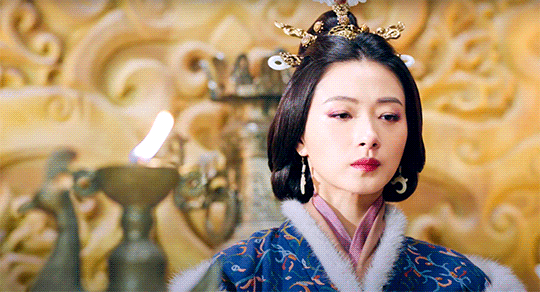





Melian the Maia | Women of Arda - Ladies of the Teleri | Part 1 of 6
Melian as a maia was one of the ainur that descended to Arda to assist the Valar in shaping the world. She was said to be not unlike Yavanna Kementári, the valië known as the Queen of the Earth, and she served her younger sister Vána, as well as Estë. Consequently, she would have been well versed in the ways of all living things, as well as healing. While she was in Valinor she lived in the gardens of Lórien and tended to the trees there. Of all those that dwelt there, she was the most beautiful, wisest, and most skilled in songs of enchantment. It it said that it was she that taught the nightingales to sing and at noon, when the lights of the trees mingled, she would sing and all of Valinor would pause to listen.
Sometime around Y.T 1050, Melian was drawn to Middle-Earth, and she would wander it's empty forests filling them with song. In Y.T 1130, she encountered the leader of the Teleri as they journeyed to the West, Elwë Singollo, in the woods of Nan Elmoth. Entranced by one another, they held hands and did not speak or move for years as the trees grew around them. Some of the Teleri remained and continued the search for their missing lord, such as Círdan, while Elwë's brother Olwë led the faction that pressed on into the West and settled in the Blessed Realm. After two hundred years, the two emerged from their enchantment and went on to found the kingdom of Doriath. Together, they had a daughter, Lúthien Tinúviel, born in Y.T 1200. Due to her heritage, she was the fairest of all the Children of Ilúvatar to have ever lived.
As Queen of Doriath, Melian proved a wise counsellor to her husband and was granted much foresight. Furthermore, she wielded considerable physical power, as she alone was able to repel Ungoliant from their lands when the creature escaped to Middle-Earth. It was by her wish that she established a girdle of enchantment around the realm of Doriath, hiding it from Morgoth's eye and ensuring that no one less powerful than her could enter. However, she foretold that in time one would eventually enter, and so when Beren arrived in Doriath she advised Thingol against sending him on the seemingly impossible quest for the silmaril.
When the Noldor entered Beleriand, the descendants of Olwë were permitted to enter Thingol's kingdom. This included Galadriel, who would become a close friend of Melian, and it was from her that the Lady of Lothlórien learnt the practice of lembas making. Melian was able to eventually learn from Galadriel the Noldor's actions in the First Kinslaying and so warned her husband against dealings with the sons of Fëanor. Additionally, she and Thingol agreed to foster Húrin's son, Túrin, and later would aid his mother Morwen and sister Nienor, though the queen perceived some of the doom that lay on him.
Elu Thingol was killed in F.A 5O3 in the Battle of the Thousand Caves, a conflict ultimately sparked by Thingol's command to Beren to obtain a silmaril and his treasuring it once it was given as a bride-price. Afterwards, Melian is said to have disappeared from Middle-Earth and returned to Valinor where she mourned her husband and daughter.
#melian#the lay of leithian#tolkien#lúthien#the silmarillion#luthien#thingol#Melian the Maia#lotredit#lotr#tolkien legendarium#maiar#ainur#ladiesoftheteleri#house of elwë#Fancast: Wan Qian in Secret of the Three Kingdoms (三國機密之潛龍在淵)#and sshhh yes I know she's not teleri but she lived with the sindar for most of the years of the trees and the first age#so surely that counts for something???#womenofardaproject#long post#myedit
269 notes
·
View notes
Text

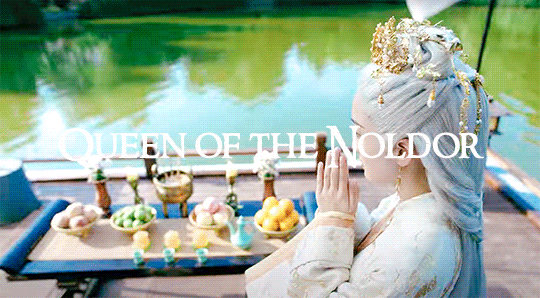




Eärwen | Women of Arda - Ladies of the Teleri | Part 2 of 6
Eärwen was the daughter of Olwë, the younger brother of Elwë and elder brother of Elmo. She was born sometime after Y.T 1151, when the Teleri under her father arrived in Valinor and began to dwell on the isle of Tol Eressëa. Whether she was born on the island or in the city of Alqualondë once the Falmari moved to the mainland and her father became king is not known. She was known as the Swan-maiden of Alqualondë and had several brothers.
In Y.T 1280, Eärwen married Arafinwë, the third son of King Finwë of the Noldor. Together they had four children, three sons named Findaráto, Angaráto and Ambaráto, and a daughter, Artanis. On account of the love Eärwen’s people had for the sea and unknown places, all of her children shared a desire to seek distant shores. In particular, Artanis was full of ambition and sought to rule her own realm beyond the confines of the Blessed Realm. Due to this part of her nature, as well as her stature and physical prowess in all manner of things, Eärwen gave her the mother-name Nerwen, meaning “man-maiden”.
In Y.T 1495, after the murder of King Finwë and the theft of the silmarils, Eärwen’s brother-in-law Fëanor led a host of the Noldor across Valinor in pursuit of Morgoth. Arafinwë and Ñolofinwë followed. In order to cross the sundering seas and fight Morgoth in Middle Earth, Fëanor tried to convince the Falmari to join him. They refused, insisting that they only wished to live in Aman and would have only Olwë as their king. Needing their ships, Fëanor then attacked the Falmari, in what was known as the First Kinslaying. Arafinwë’s host did not join Fëanor in the assault and Eärwen’s children fought in defence of their mother’s people.
Eärwen became queen of the Noldor in Valinor when Arafinwë returned to Tirion after the kinslaying, no longer wishing to go into exile, and was made king. Anairë, the wife of Ñolofinwë, also stayed due to her close friendship with Eärwen. Her children, however, joined Ñolofinwë’s host in crossing the Helcaraxë. Upon entering Middle Earth, they earned renown, and due to their mother’s heritage were able to enter the kingdom of her uncle, who ruled in Doriath as Elu Thingol. Findaráto changed his name to Finrod and was given the title of Felagund by the dwarves. He established the kingdom of Nargothrond, but died after being taken prisoner by Sauron when he aided Beren in his quest for the silmaril. Angaráto and Ambaráto were known as Angrod and Aegnor and were slain in F.A 455 at the Dagor Bragollach.
While none of her sons survived the First Age, Eärwen’s daughter would go on to be known by the Sindarin name Galadriel, Lady of Lórien and bearer of Nenya, the ring of adamant. She was the mightiest of the elves left in Middle Earth by the end of the Third Age. Upon sailing to the West in T.A 3021, she would have at last been reunited with her mother and father, as well as possibly reincarnated brothers.
#eärwen#earwen#tolkien#lotr#tolkien legendarium#the silmarillion#Galadriel#thingol#Teleri#finrod#finarfin#lotredit#womenofardaproject#ladiesoftheteleri#valinor#the first kinslaying#the rebellion of the noldor#falmari#house of olwë#fancast: song qian in ice fantasy (幻城)#long post#myedit
242 notes
·
View notes
Text


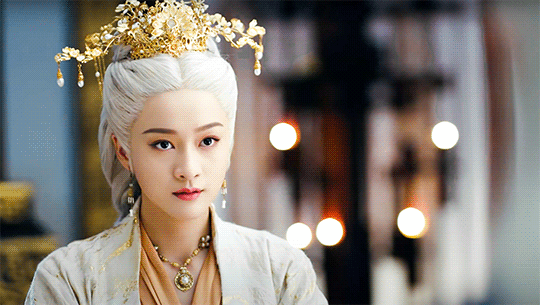



Celebrían | Women of Arda - Ladies of the Teleri | Part 6 of 6
Celebrían was the daughter of Celeborn and Galadriel, who by the Third Age ruled as Lord and Lady of Lothlórien. Although her parents likely met in F.A 6, Celebrían was not born until the early Second Age. Her birth place may have been by the shores of Lake Neunial, or perhaps she was born later after S.A 750 when her parents relocated to the Noldorin kingdom of Eregion.
In S.A 1350, Celebrían joined her mother in departing Eregion through the halls of Moria and arrived in the realm of Lothlórien soon after. There, they lived as guests of King Amdír and his son, Amroth. Given this timeline, it is likely that Celebrían was born by the time Sauron came to Eregion in S.A 1200. Sometime after S.A 1590, Celebrimbor delivered to her mother the ring of power Nenya. Eregion’s capital, Ost-in-Edhil, would later fall to Sauron in S.A 1697. Celeborn fought in defence of Eregion, but along with Elrond, who had arrived with a host of reinforcements from High King Gil-galad, was forced back into a dell on the western slopes of the Misty Mountains. There they founded the refuge of Rivendell, which was also called Imladris by the elves.
Celebrían and Galadriel crossed the Misty Mountains in search of Celeborn in S.A 1701. Upon arriving in Rivendell, Celebrían met Elrond for the first time. It is said that Elrond loved her then, but he did not speak anything of it for many years. Eventually they would marry in T.A 109. Celebrían was a distant relation of her husband on both sides of her family, as Galadriel was the granddaughter of King Olwë of Alqualondë and Celeborn was the grandson of Elmo, both brothers of his ancestor King Thingol of Doriath. Additionally, Elrond’s grandmother Nimloth was the daughter of Galathil, Celeborn’s brother, and they both could claim descent from King Finwë of the Noldor. Together they had three children, twin sons named Elladan and Elrohir who were born in T.A 130, and a daughter Arwen in T.A 241. At some point, Celebrían would pass on the elfstone she inherited from Galadriel to Arwen, which would later be given to Aragorn and earn him his name of Elessar. This may have been the same elessar worn by Idril Celebrindal of Gondolin and her son Eärendil, or perhaps a latter one fashioned by Celebrimbor in the former's image.
Celebrían’s company was attacked by orcs while crossing the Redhorn Pass in T.A 2509 when she went to visit her parents in Lórien. Elladan and Elrohir rescued her from the dens of the orcs, but although Elrond was a skilled healer he was unable to cure the spiritual wounds she suffered during her torment. She departed for the West in T.A 2510 to seek healing in Valinor. Her sons fought many battles against the orcs, seeking vengeance across Middle Earth for her loss, while Arwen visited her grandparents several times across the mountains.
Elrond sailed in T.A 3201 following the War of the Ring along with Galadriel and they would have been reunited with Celebrían in Valinor. Arwen chose mortality for her love of Aragorn and became the queen of the Reunited Kingdoms of Arnor and Gondor. She had one son, Eldarion, and several daughters. When Aragorn died in F.A 120, Arwen went to the abandoned realm of Lothlórien and died on the hill of Cerin Amroth the following year. Celeborn and the twins did not initially sail West. They may have lingered in Middle Earth until Arwen passed or remained there until they faded, but it is not known. Consequently, Celebrían may never have seen any of her children again and was never reunited with Arwen.
#celebrían#celebrian#elrond#tolkien#lotredit#lotr#tolkien legendarium#galadriel#rivendell#arwen#elladan#elrohir#celeborn#womenofardaproject#unfinished tales#ladiesoftheteleri#the sindar#the teleri#also please don't question why cate blanchett is still in this lol#the lord of the rings#fancast: zhang xueying in princess silver (白发)#myedit#Edit
357 notes
·
View notes
Text



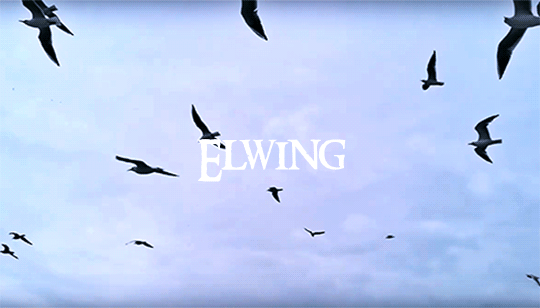


Elwing | Women of Arda - Ladies of the Teleri | Part 5 of 6
Elwing means "star-spray" and she was named for the way the stars glittered in the waterfall of Lanthir Lamath by her father's house on the night she was born in F.A 503. Her father was Dior Elúchil, son of Lúthien and Beren and the heir of King Thingol of Doriath. Her mother was Nimloth, the daughter of Galathil and the niece of Lord Celeborn. As such, they were distant relations, as Celeborn and Galathil’s grandfather was the brother of Thingol. Elwing had two brothers, Eluréd and Elurín, who were her elders by three years.
In F.A 502, King Thingol was killed by dwarves in an attempt to retrieve the Nauglamír, a precious artefact of dwarven make that now contained Lúthien's silmaril. The kingship then passed to Dior. News that the new king now wore the silmaril openly spread to the Sons of Fëanor. They came to Doriath in what was later known as the Second Kinslaying in F.A 506. Dior was able to kill Celegorm, and possibly Curufin and and Caranthir as well, but he and Nimloth were also slain and Doriath destroyed. The servants of Celegorm then abandoned Eluréd and Elurín in the forest to die. Maedhros is said to have looked for them, but never found them. They may have perished alone in the woods, though some tales say that they were rescued by the birds and in secret found their way to Ossiriand.
Elwing was one of the few survivors of the Second Kinslaying and she carried the silmaril all the way to the Havens of Sirion where she sought refuge. Additionally, she also brought with her Aranrúth, the sword of Elu Thingol. There she was also joined by the refugees from Gondolin, including Idril Celebrindal, Tuor son of Huor, and their young son, Eärendil. Elwing married Eärendil in F.A 525 and in F.A 532 she gave birth to their sons, Elrond and Elros. Ever an avid mariner, Eärendil was often away at sea. On one of these trips in F.A 538, the Sons of Fëanor came to Sirion and attacked in order to reclaim Elwing's silmaril. Rather than be slain by them, Elwing cast herself off a cliff.
Ulmo saved Elwing from drowning and instead turned her into a white gull. In this guise, she flew to Eärendil and delivered the silmaril to him. She travelled with him into the West and refused to be parted with him when he looked for the Valar's aid in Valinor. Importantly, Elwing went to Alqualondë and spoke to the Falmari, who as Teleri were kin to her, and told them of the histories of the Sindar. In doing so, she persuaded them to set sail with the Host of the Valar and fight Morgoth in Middle Earth.
After the War of Wrath, Elwing and Eärendil were given the choice whether to be counted as elves or men. Eärendil asked for Elwing to choose for them, though in his heart he loved the race of men dearly, and she chose the elves. Elwing was given a white tower in the north of the Blessed Realm that overlooked the Sundering Seas and there she learnt the language of birds. In her form as a gull, she would often fly to Eärendil and meet him as he sailed across the sky. Elwing's sons were also given the choice. Elrond chose immortality and became a great lord, ring bearer and well-respected lore master. Elros chose mortality and became the first king of Númenor, known as Tar-Minyatur, and thus the ancestor of the line of Isildur and Aragorn Elessar, who would marry Elrond's daughter.
#elwing#lotr#tolkien#the silmarillion#tolkien legendarium#lotredit#earendil#eärendil#dior#luthien#thingol#melian#ladiesoftheteleri#womenofardaproject#elrond#elros#long post#eluréd#elurín#doriath#first age#house of elwë#fancast: zhang ziyi in monarch industry / the rebel princess (上陽賦)#myedit
183 notes
·
View notes
Photo
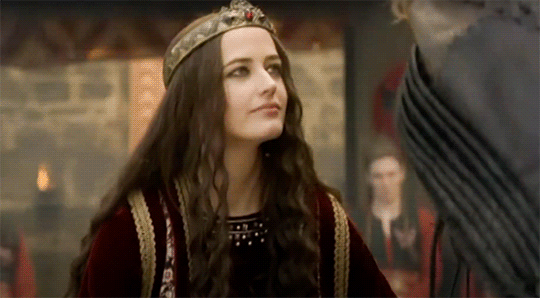


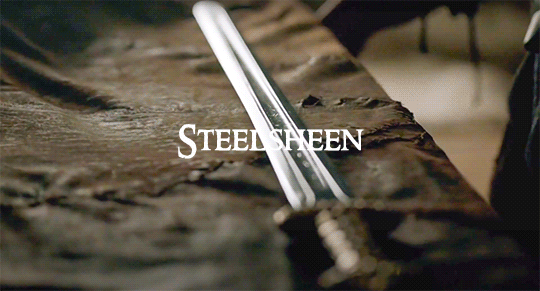

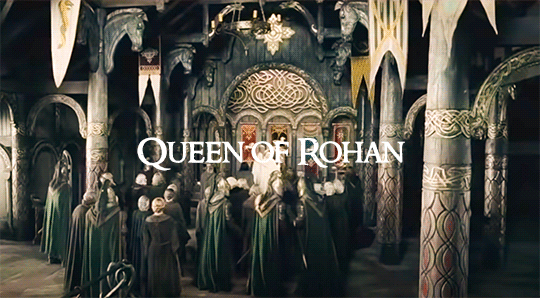
Morwen Steelsheen | Women of Arda - Ladies of Rohan | Part 3 of 5
Morwen of Lossarnach was born in T.A 2922. Her father was not originally from the Vale of Flowers, instead hailing from Belfalas, and he was a descendant of the princes of Dol Amroth.
She married Thengel of Rohan in T.A 2943, despite being considerably younger than him, while he was still a prince and living in Gondor in the service of the steward Turgon. They dwelled in Lossarnach for a time and there their secondborn and only son, Théoden, was born in T.A 2948. Their youngest child was named Théodwyn and she was born in Rohan in T.A 2963, making Morwen the grandmother of Théodred, Éomer, and Éowyn.
Upon the death of Fengel King in T.A 2953, Thengel reluctantly returned to Rohan with his wife. Some of the Rohirrim disapproved that Sindarin and Westron were spoken in their household and they gave Morwen the name Steelsheen for her grace and pride. Thengel went on to become a good king and ruled until T.A 2980. Sometime during his kingship, Saruman declared himself Lord of Isengard and began encroaching on Rohan’s borders.
#rohan#lotredit#tolkien#tolkienedit#the house of eorl#gondor#morwen#morwen steelsheen#eowyn#eomer#theoden#theodred#womenofardaproject#fancast: eva green in camelot#éowyn#éomer#théoden#ladiesofrohan
287 notes
·
View notes
Text






Idril Celebrindal | Women of Arda - Ladies of the Noldor | Part 5 of 6
Idril was first named Itarillë when she was born in Valinor sometime before Y.T . 1500. Later, she would take the Sindarin version of her name and also be called Celebrindal, or Silver Foot, for her practice of walking unshod on the grass after the chill of the Helcaraxë and bathing her feet in the fountains of Gondolin. She was the only child of Turukáno, son of Ñolofinwë Arcáno, and Elenwë of the Vanyar. As her grandfather was the second son of King Finwë of the Noldor, she was counted amongst the many princesses of the House of Finwë. She was renowned for her wisdom and foresight.
Itarillë went with her parents into exile and travelled with her grandfather's host across the treacherous Helcaraxë. At one point, both she and her mother fell through the ice and into the water. Her father risked his life to save them, but only Itarillë was retrieved. Upon reaching Middle Earth, her family took Sindarin names, with her father becoming Turgon and she becoming Idril. She dwelt with her father in Vinyamar, while her grandfather - now Fingolfin - ruled as High King, before helping Turgon to establish the city of Gondolin sometime between F.A 64 and F.A 116. Sometime after that, the craftsman Enerdhil fashioned a famous gem known as the Elessar, which he gave to Idril to wear. In F.A 400, her aunt Aredhel, who had been lost for years, returned to the hidden kingdom with her son, Maeglin. Idril was the only one who could perceive her cousin’s mind and saw that he loved her despite their close kinship. She forever mistrusted him.
Following the deaths of her grandfather and uncle Fingon, the kingship passed to Idril’s father in F.A 472 . Turgon sent ships to the West, hoping to ask the Valar for aid against Morgoth, but the only elf to return was Voronwë. With him came a mortal, Tuor son of Huor, who bore arms Turgon had left in Vinyamar at the behest of the vala Ulmo. He delivered Ulmo’s warning to the king and was welcomed into his trust and counsel. During this time, Idril came to love Tuor and they married seven years later, marking the second union between the elves and the Edain. Idril and Tuor’s son, Eärendil, was born in F.A 503. In the custom of the Noldor in Valinor, Idril also gave her son the mother-name Ardamíre (Mír n’Ardhon in Sindarin), meaning “jewel of the world” which foretold his destiny.
Years later, when Morgoth became even more determined to uncover the location of Gondolin, Idril prepared a secret way as a means of escape in the even the city was attacked. She ensured that this work was not known to Maeglin, who eventually betrayed Gondolin to Morgoth. In F.A 510 the city was besieged and eventually fell, with Turgon perishing. Idril and Tuor led the survivors through the secret passage and out to the Havens of Sirion. At the Havens of Sirion the people of Gondolin met other refugees from Doriath, including the daughter of King Dior, Elwing. Idril’s son married Elwing in F.A 525 and was made lord of the havens. As Tuor grew older, he built the ship Eärrámë and together he and Idril sailed to the West. Before leaving, Idril entrusted the elf stone to Eärendil. When they arrived in Valinor, Tuor was accepted as one of the elves, and they lived there until the end of Arda.
Eärendil was one of the leaders of the War of Wrath and afterwards sailed across the heavens with the silmaril that Elwing gave him upon his brow. At night, he can be seen as the evenstar. His sons, Idril’s grandsons, were left in Middle Earth. The elessar Enderdhil made for Idril may be the elfstone given to Aragorn by Galadriel in the Third Age, but that is not know for certain. How Turgon’s sword, Glamdring, was eventually discovered in a troll hole is also unknown, nor whether it was used by the king in the fall of Gondolin. Some speculate that Idril carried it away from the siege before it was lost.
#idril#idril celebrindal#tolkien#the silmarillion#lotredit#lotr#the noldor#the house of finwe#earendil#gondolin#the fall of gondolin#tuor#long post#tolkien legendarium#tolkiensaweek#fancast: tripti dimri in bulbul#womenofardaproject#ladiesofthenoldor#edit#the house of finwë#turgon#maeglin#eöl#also headcanon that while all the kindreds of the elves have a certain look TM#the houses of the Edain have a lot of genetic diversity going on#so it’s difficult to very clearly lump anyone into houses just on sight
212 notes
·
View notes
Photo



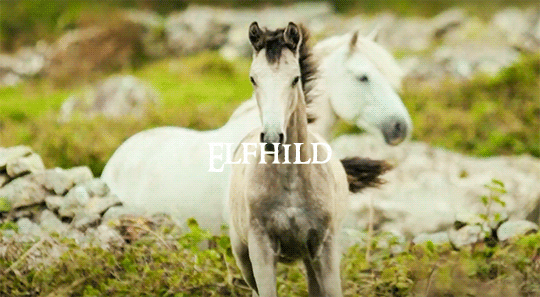


Elfhild | Women of Arda - Ladies of Rohan | Part 4 of 5
Elfhild was the wife of Théoden King, the seventeenth king of Rohan and last of the second line of kings. They married when her husband’s father, Thengel King, still ruled and had a child, Théodred, in T.A 2798.
Elfhild died giving birth to their son and Théoden never remarried. Théodred grew up to be Second Marshall of the Mark and a known warrior. He was, with his cousin Éomer, the chief opponent of Gríma Wormtongue when the advisor grew more powerful within Meduseld. In 3019 T.A, he died in the first battle of the Fords of Isen.
#elfhild#theoden#théoden#theodred#théodred#rohan#the house of eorl#lotredit#tolkienedit#lotr#tolkien#womenofardaproject#fancast: jessalyn gilsig in vikings#ladiesofrohan#tolkien legendarium#the rohirrim#myedit
157 notes
·
View notes
Text






Aredhel | Women of Arda - Ladies of the Noldor | Part 4 of 6
Aredhel was born Írissë, the daughter of Ñolofinwë, the second son of King Finwë of the Noldor, and Anairë. She was the third of four children and the only daughter. Her brothers were named Findekáno, Turukáno, and Arakáno, though they were remembered in tale and song as King Fingon, King Turgon, and Prince Argon. She was born the same year as her cousin, Artanis, who would later be called Galadriel. On account of her wearing white, Aredhel became known by the Sindarin name "Ar-Feiniel", the White Lady.
In. Y.T 1495, Aredhel followed her father across the Helcaraxë and into Middle Earth, where he was crowned High King Fingolfin of the Noldor after the death of her uncle Fëanor. Later, she dwelt with her brother, King Turgon, in Gondolin, while Fingon ruled as High King. In the hidden kingom, she longed to ride through the forests and wide lands as she once did in Valinor. Turgon was reluctant to let her leave in search of these, but he eventually gave his permission and she left with a small escort.
Although she was meant to only visit their brother Fingon, Aredhel chose instead to see her cousins, Celegorm and Curufin. When she arrived, however, she found that they were away. Upon growing tired of waiting for them, she began to take trips and wandered into the dark forest of Nan Elmoth. There she was seen by the Dark Elf Eöl, and using spells he drew her closer to his home.
In time, Aredhel had a son with Eöl named Maeglin. Although free to wander in Nan Elmoth, Aredhel was forbidden from visiting her family and thus grew homesick. She told Maeglin many stories about Gondolin and the Noldor, which eventually prompted him to suggest that they escape and return to Gondolin. There, Aredhel and Maeglin were welcomed, but Eöl followed them. King Turgon offered to acknowledge him as a kinsman and give him leave to stay in Gondolin, but Eöl refused and asked for both him and his son to be put to death. When it became clear that Maeglin would be spared, he attempted to kill him himself with a javelin. Aredhel threw herself before her son and was wounded by the poison tipped spear.
Even as she lay dying, Aredhel begged her niece, Idril, to speak to Turgon in favour of showing Eöl mercy. The entire city mourned her loss.
#aredhel#the silmarillion#the noldor#tolkien legendarium#aredhel ar-feiniel#womenofardaproject#ladiesofthenoldor#fancast: deepika padukone in Bajirao Mastani (2015)#noldor#tolkien
151 notes
·
View notes
Photo






Daughter of Helm | Women of Arda - Ladies of Rohan | Part 2 of 5
The nameless daughter of Helm Hammerhand was born in the 28th century of the Third Age. She had two elder brothers, Haleth and Háma. Her father became king of Rohan in T.A 2741.
In T.A 2754, a lord of Rohan named Freca came to the king’s council with a large retinue of his men and tried to force a marriage between his son, Wulf, and Helm’s daughter. The king struck Freca so hard that he died from the blow, earning him the name “Hammerhand” and starting a civil war as he declared that all of Freca’s kin were his enemies. Wulf fled to Dunland and built up a force of men.
When Rohan was attacked by enemies to the East in T.A 2758, Wulf invaded from the West and seized Edoras. There, he killed Prince Haleth and sat in Meduseld, declaring himself king. Helm took refuge in the mountains, in a fortress later known as the Hornburg and the ravine beyond; Helm’s Deep.
Soon afterwards, the Long Winter set in, covering the Riddermark in snow for five months. Both the Rohirrim and their foes suffered from the ensuing famine. That Yule, a great council was held and afterwards Háma, Helm’s younger son, went out into battle and died during a night sortie. Aged by grief, Helm died in battle soon after in T.A 2759. The kingship then passed to his sister-son, Freáláf Hildson.
#rohan#lotr#lotredit#tolkien#tolkienedit#the house of eorl#the lord of the rings#womenofardaproject#myedit#edit#fancast: lucy martin in vikings#helm hammerhand#ladiesofrohan
148 notes
·
View notes
Text






Nimloth | Women of Arda - Ladies of the Teleri | Part 4 of 6
Nimloth was likely born sometime before F. A 447 and was the daughter of Galathil, a lord of Doriath and brother of Celeborn. They were the sons of Galadhon, who was in turn the son of Elmo, the brother of King Olwë of the Falmari and King Thingol of the Sindar, and thus Nimloth was kin to both kingly houses of the Teleri.
In F.A 497, Nimloth married Dior Elúchil, the half-elven son of Lúthien Tinúviel and Beren Erchamion. For a time they lived in the Blue Mountains and had a house by the waterfall of Lanthir Lammath. Together they had three children there, twin boys who they named Eluréd and Elurín in F.A 500 and a daughter, Elwing, in F.A 503. Their time away from Doriath, however, was short lived.
The same year that Elwing was born, Nimloth and Dior received a messenger bearing with him the Nauglamír, the precious necklace that Thingol was killed for and was worn by Lúthien. This was how they learnt that Nimloth’s mother-in-law had passed beyond the circles of the world, the first of the elves to do so, and soon after Dior and Nimloth returned to Doriath. There, they ruled as king and queen for a time.
In F.A 505, the sons of Fëanor heard word that Dior had begun to wear the Nauglamír openly. It was said that while he wore it, the light of the silmaril would light up his face so that he seemed the fairest living being of the three races of maiar, men, and elves. They sent a message to the king demanding the return of their father’s gem to them. Dior, however, sent no answer and in F.A 506 the sons of Fëanor invaded Doriath in what was known as the Second Kinslaying.
It is not known what role Nimloth played in these events, nor how exactly she came to her end, but it is certain that she perished during the kinslaying. Dior was said to have successfully killed Celegorm, and possibly Curufin and and Caranthir as well, but he too was slain and their kingdom brought to ruin. Their sons were left in the wilderness to die by the servants of Celegorm, presumably as retribution for the killing of their lord. While Eluréd and Elurín were never seen again, some tales say that they were aided by the birds of the woodlands and made their way to Ossiriand. Nimloth’s daughter, Elwing, escaped unharmed and brought her grandmother’s silmaril to the havens of Sirion, along with the sword of Thingol.
#nimloth#dior#doriath#tolkien#the silmarillion#tolkien legendarium#lotr#lotredit#womenofardaproject#ladiesoftheteleri#elwing#the second kinslaying#elured#elurin#eluréd#elurín#sons of fëanor#celegorm#curufin#caranthir#fancast: yang mi in Eternal Love / Three Lives Three Worlds Ten Miles of Peach Blossoms ( 三生三世十里桃花)#myedit
138 notes
·
View notes
Photo
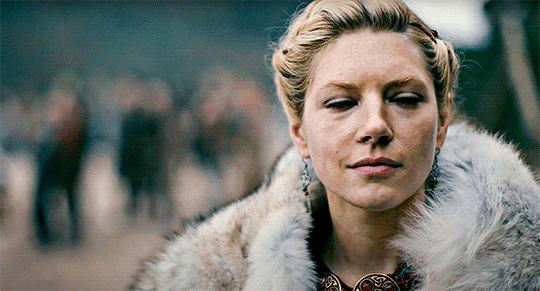




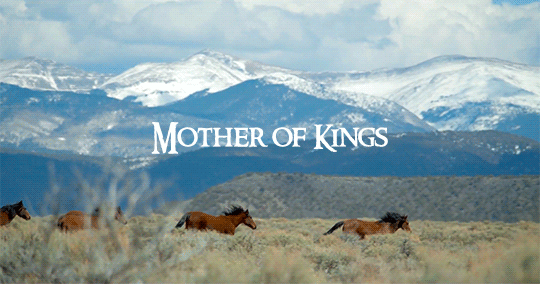
Hild | Women of Arda - Ladies of Rohan | Part 1 of 5
Hild was a noble woman of Rohan, born sometime in the early 28th century of the Third Age. Her name is the poetic Old English word for battle and was the daughter of Gram, the eighth king of Rohan. During her father’s reign, the Rohirrim suffered from constant raids by the Dunlendings
In T.A 2741, her brother Helm Hammerhand became king. Eighteen years into his reign, tragedy befell the House of Eorl when a rebellion was begun and Helm’s son Haleth was slain defending Meduseld. A year later, Helm’s second and last son Háma was also killed. Aged by their deaths, Helm later fell in a night sorty.
And so, in T.A 2759 the kingship then passed to Hild’s son, Fréaláf Hildeson, who became the first king of the second line. Under his rule, the Dunlendings were defeated and Saruman came to Orthanc. The direct descendants of Hild ruled Rohan until the fall of Théoden in the Battle of the Pelennor Fields, when the kingship once again passed to the sister-son of the king.
#rohan#lotr#lotredit#tolkien#tolkienedit#tolkien legendarium#the house of eorl#hild of rohan#ladiesofrohan#womenofardaproject#fancast: katheryn winnick in vikings#edit#myedit#shieldmaiden
160 notes
·
View notes
Photo






Lothíriel Queen | Women of Arda - Ladies of Gondor | Part 6 of 6
Lothíriel was born in T.A 2999 to Prince Imrahil, the twenty second prince of Dol Amroth. She was his youngest child and only daughter amongst three brothers; Elphir, Erchirion, and Amrothos. Her name may mean “flower garlanded maid” in Sindarin.
In T.A 3021, Lothíriel married Éomer Éadig, the king of Rohan, who had fought with her father during the Battle of the Pelennor Fields and the Battle of the Morannon. Together they had at least one son, Elfwine the Fair.
Éomer ruled for more than six decades. Following his death in F.A 63, Elfwine assumed the kingship and became the second king of the third line of Rohan.
#lotr#lotredit#tolkien#tolkienedit#lothiriel#lothíriel#gondor#rohan#tolkien legendarium#the lord of the rings#womenofardaproject#womenofgondor#eomer#éomer#eothiriel#elfwine#fancast: katie mcgrath in merlin#myedit
182 notes
·
View notes
Photo



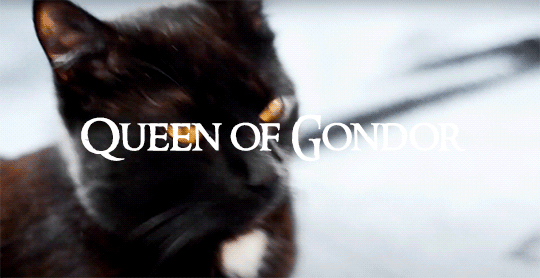


Queen Berúthiel | Women of Arda - Ladies of Gondor | Part 1 of 6
Berúthiel was the “nefarious, solitary, and loveless” queen of Gondor’s twelfth king, Tarannon Falastur. She came from a land beyond Umbar and, although her husband was the first of the Ship-Kings, loathed the sight, smell, and sound of the sea. Dwelling in the King’s House of Osgiliath, she kept the rooms bare and the gardens full of strange sculptures.
Cats were drawn to Berúthiel, even though she hated them. Eventually, she came to torture and enslave them, and used 10 black cats to spy on the men of Gondor. The eleventh cat, a white one, was used to spy on those cats. By reading their memories, she was able to learn many dark secrets of the realm, and men would curse them when they saw them pass.
The last record of her was when King Tarannon sent her into exile, setting her on a ship that sailed passed Umbar “with a cat at the masthead and another as a figurehead on the prow”. He struck her name from the Book of Kings, but memory and fear of Berúthiel endured for well over 2,000 years in the hearts of the men of Gondor.
Berúthiel means “Angry Queen” in Sindarin and likely was not her real name.
#beruthiel#berúthiel#lotredit#tolkien#the lord of the rings#gondor#myedit#womenofgondor#mine#fancast: indira varma in game of thrones as beruthiel#womenofardaproject#tolkien legendarium
162 notes
·
View notes
Text






Írimë Lalwendë | Women of Arda - Ladies of the Noldor | Part 2 of 6
Írimë was born to King Finwë and Indis sometime between Y.T 1190 and Y.T 1230 in Tirion. Her mother-name was Lalwendë, and she was most commonly known as Lalwen throughout her life. She had an elder sister, Findis, and an older brother, ��olofinwë, and was followed by another brother, Arafinwë. Additionally, she was the youngest half-sister of Fëanáro, Finwë’s son by his first wife. Of all her siblings, she was the closest with Ñolofinwë.
When the Noldor were given the choice between remaining in the Blessed Realm and going into exile to fight Melkor in Middle Earth, Írimë chose to depart. With her went her brother Ñolofinwë and his descendants, and she travelled in his host into the North and onto the Helcaraxë. In Valinor she left behind Arafinwë and Findis, as well as her mother.
Ñolofinwë and a remainder of his host successfully crossed the ice and upon arriving in Belerian he renamed himself Fingolfin. While his fate is known and told in many songs, nothing is remembered of Írimë. It is not known whether she survived the crossing of the Helcaraxë to reach Middle Earth or if she perished on the grinding ice, as many did. What is known is that there were many tragedies that befell the Noldor throughout the First Age and that by the Third Age Írimë’s niece, Galadriel, was the greatest of the Eldar still in Middle Earth. It is likely she died sometime before this, and was reborn again in Valinor, or returned sometime shortly after the War of Wrath.
#the noldor#tolkien legendarium#lotredit#tolkien#the silmarillion#silmedit#irime#house of finwe#finwë#írimë#womenofardaproject#ladiesofthenoldor#lotr#fancast: Rani Mukherjee in Paheli#elves#fingolfin#tolkiensaweek#@arwenindomiel#myedit
131 notes
·
View notes